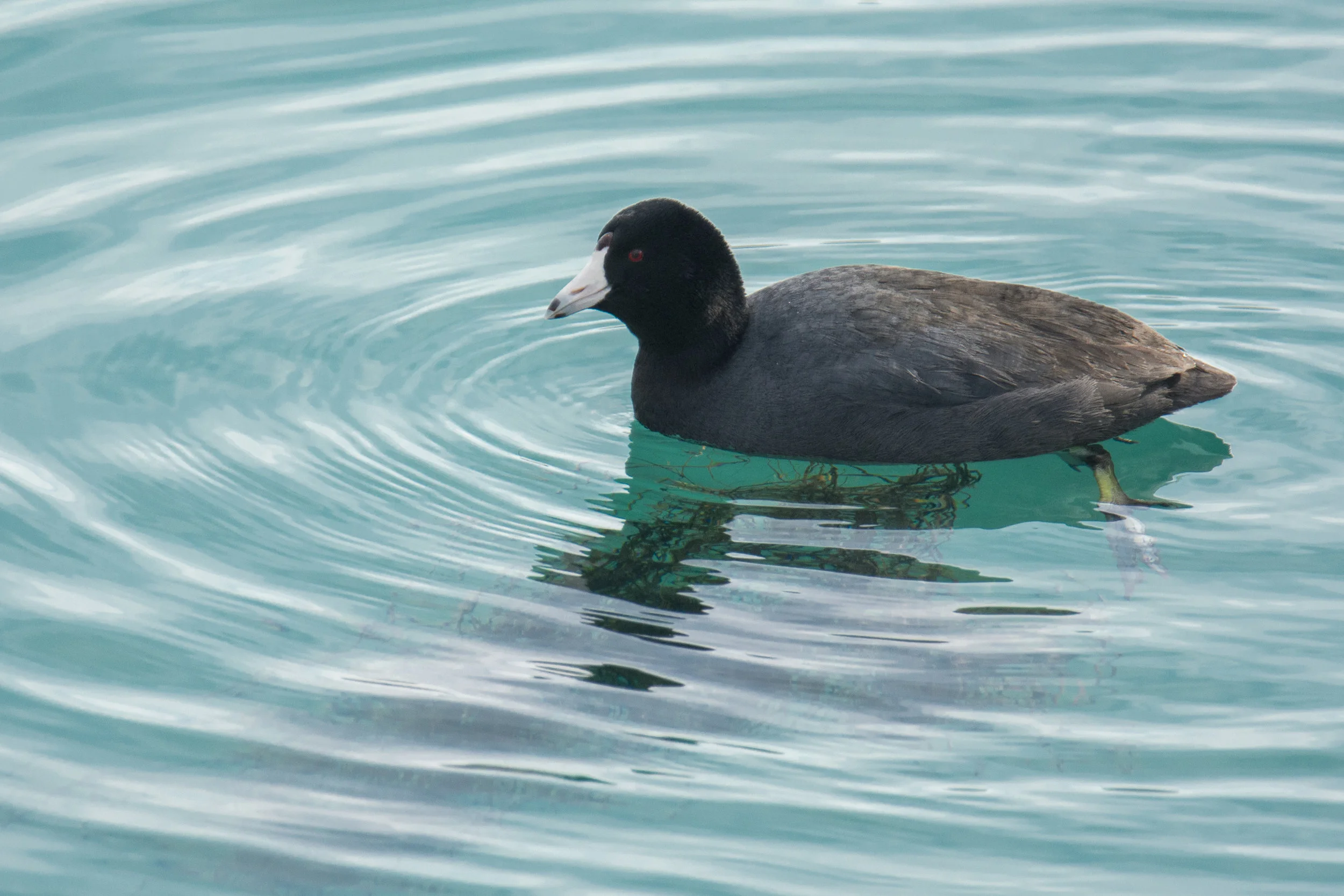Dan's Feathursday Feature: American Coot
Photo credit: Dan Lory
About ten years and three careers ago, I found myself living in Asia. One winter, our family had the wonderful opportunity to visit Tasmania. A highlight of that trip was seeing a platypus--not in a zoo, but in the wild. We were having dinner at a small country inn, and when we struck up a conversation with the restaurant owner about that unusual creature, she said matter of factly, "There's one hangs out in the crick, right behind us there, just a bit out scrub." Too embarrassed to ask for a translation, we walked out back, where we found a small stream running through the brush there and, sure enough, one cooperative platypus made an appearance and put on quite a show for us. What a fascinating animal.
I'm not about to claim that the American Midwest can compete with the evolutionary oddities of the land down under, but in the American Coot we sure do give it the old college try. There is nothing bizarre about the Coot--at least not in the same way as the platypus. No venomous claws, no mammary glands, no energy-storing fatty tail. But there is plenty about the Coot to make you wonder, what exactly is this thing?
Looks-wise, I guess you could say it looks like a duck, if you don't look too closely. You'll find the American Coot floating on just about any body of water--small ponds, marshes, lakes--scooting about, looking and acting very much like a duck.
But look more closely, and you see that, like the platypus, it does not like to be pigeonholed into just one neat scientific definition. It floats like a duck, but it has a beak that is more chicken than duck. And its legs are more forward on its body than a duck's, so when it walks on land it looks comfortable, like a chicken.
And those feet--they're huge, almost to the point of being comical. They're not webbed, like a duck's feet. Instead each long toe has lobes of skin that spread out to make for good kicking when swimming and good support when walking across lily pads or marshy muck. The first time I saw a swimming coot lift its foot out of the water to preen, I thought it was being attacked by something. The feet are so incongruously large they just don't look like they could possibly be attached to that bird.
Speaking of incongruous: It turns out that the little duck-like, chicken-like American Coot is more closely related to the long-legged Sandhill Crane than it is to either ducks or chickens. It's a wading bird that just decided it wanted to swim, too.
Put all this together, and you find that the American Coot is quite an amazing creature. And to see one, you don't have to travel to the other side of the globe, where people drive on the wrong side of the road, and the drains swirl in the opposite direction. They're right here in our own backyard.
Dan's Feathursday Feature is a weekly contribution to the COS blog featuring the thoughts, insights and pictures of Chicago birder, Dan Lory on birds of the Chicago region.


